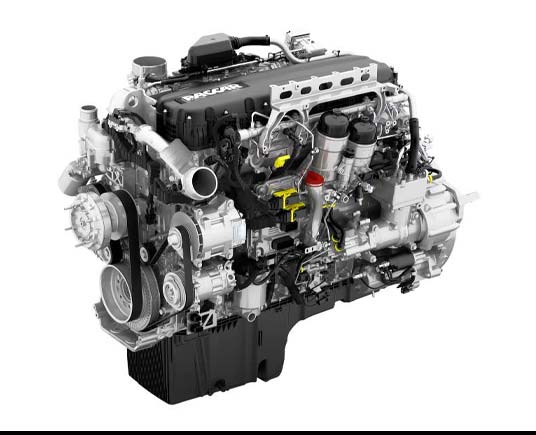
Kenworth’s Heavy Duty Trucks are some of the most popular models in the Class 8 market, and they plan on keeping that place with the new T680 line. These trucks have all-new engines coupled with the PACCAR TX-12 automatic manual transmission, introduced last month, and DX-40 axles. The designers at Kenworth say this equipment was designed to deliver improved fuel economy, smoother driving, increased power, longer maintenance intervals, and easier servicing.
These heavy duty trucks come with two new MX-series engines. The PACCAR MX-13 offers up to 2.4% better fuel economy, and is available with up to 510 HP and 1,850 lb-ft. of torque. The MX-11 offers up to 3.4% better fuel economy, and is available with up to 445 HP and 1,700 lb-ft. of torque. These engines have multi-pulse fuel injection, friction-reducing pistons and smaller, more efficient turbos. The exhaust aftertreatment system has also been revised, reducing particulate and NOx emissions without reducing power or fuel economy.
The redesign also makes service and repairs less costly and less frequent. Primary and secondary fuel filters are now mounted to the engine for easy access. Kenworth engineers say the new T680 can go up to 75,000 miles between oil and fuel filter changes. A 12 volt fuel heater comes standard on all engines, making startup easier in severe weather. The engine harness is fully encapsulated, and uses fewer connections to the vehicle. This design feature is aimed at limiting problems related to electrical corrosion. The major components warranty for these heavy duty trucks is 5 years or 500,000 miles, the longest guarantee in the industry.
As is common practice in the Kenworth design room, engineers and designers looked at the drivetrain as a whole, engineering the new engines, 12 speed PACCAR TX-12 transmission and DX-40 axles to work together in the new T680. The PACCAR TX-12 and the new MX engines are designed to work together with Kenworth’s predictive cruise control. This system uses GPS to monitor upcoming grades, adjusting the throttle automatically to maximize fuel economy through a process of data gathering, processing, and precision hardware.




